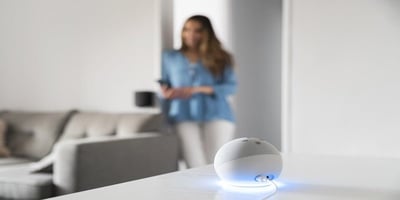How to Clean a Non-Washable HEPA Filter: Maintenance Tips and Tricks
Key Takeaways
- Water destroys non-washable filters permanently — exposure to moisture damages the delicate fiber structure that captures microscopic particles, rendering expensive filters completely useless, regardless of their original quality
- Gentle dry cleaning methods preserve filter efficiency — light tapping, careful vacuuming with HEPA-equipped machines, and soft brushing maintain the fiber matrix while removing accumulated debris without structural damage
- Complete drying prevents mold and performance issues — even minimal moisture from exterior cleaning creates breeding conditions for harmful microorganisms and reduces filtration effectiveness until fully air-dried
- Your cleaning vacuum must have its own HEPA filter — regular vacuums blow captured particles back into the air during cleaning, creating a counterproductive cycle that defeats the purification purpose
- Proper preparation protects equipment and health — powering down systems, working in ventilated areas, and wearing protective gear prevents costly damage while avoiding exposure to concentrated contaminants
- Installation accuracy trumps cleaning perfection — incorrectly positioned filters create air bypass routes that eliminate system efficiency, making proper orientation and sealing more critical than spotless cleaning results
In our quest for clean and healthy indoor air, HEPA filters have emerged as essential allies. These filters, known for their exceptional ability to trap microscopic particles, are instrumental in purifying the air we breathe at home, in the office, and even in our vehicles. HEPA filters, used in air purifiers, HVAC, or vacuums, remove allergens, dust, pollutants, and pathogens from the air. Regular maintenance is crucial to keep them working effectively and ensure optimal air quality.
Many HEPA filters are washable, but not all. Some are non-washable and require special care, as washing non-washable filters can reduce their effectiveness or damage them. This article covers non-washable HEPA filters, their importance, proper cleaning methods, and the significance of maintenance for healthy indoor air.
Non-Washable HEPA Filters Explained
HEPA filters, or High Efficiency Particulate Air filters, are essential components of air purification systems, known for their remarkable ability to capture microscopic particles that can adversely affect indoor air quality. To understand non-washable HEPA filters, it's crucial to grasp the fundamental concepts of HEPA filters and how they fit into the realm of air purification.
What Is a HEPA Filter and Its Role in Air Purification?
A HEPA filter is a type of air filter designed to remove particles from the air with a high degree of efficiency. These filters are engineered to capture particles as small as 0.3 microns in size, including dust, pollen, pet dander, mold spores, and even some bacteria and viruses. Their effectiveness in removing allergens and pollutants makes them a cornerstone in improving indoor air quality.
 What Is the Role of a HEPA Filter In Air Purification?
What Is the Role of a HEPA Filter In Air Purification?
Three main functions of a HEPA filter are:
- Particle Removal: HEPA filters work by using a dense mat of randomly arranged fibers. As air passes through the filter, particles are trapped within this fibrous matrix. The fine mesh of fibers ensures that even the tiniest particles are captured, preventing them from circulating back into the environment.
- Allergen Reduction: HEPA filters are highly efficient at reducing allergens in the air. They are particularly beneficial for individuals with allergies or asthma, as they can help alleviate symptoms by removing allergenic particles from the air.
- Improved Air Quality: By removing pollutants, HEPA filters contribute to cleaner, healthier indoor air. This is essential for maintaining a comfortable and safe living or working environment.
What Is the Difference Between Washable and Non-Washable HEPA Filters?
The primary distinction between washable and non-washable HEPA filters lies in their cleaning and maintenance requirements:
- Washable HEPA Filters: These filters are designed to be cleaned and reused. They can tolerate exposure to water and mild cleaning solutions. Washable HEPA filters are known for their eco-friendliness and cost-effectiveness over time. They are typically found in vacuum cleaners and certain air purifiers.
- Non-Washable HEPA Filters: In contrast, non-washable HEPA filters are not intended for cleaning with water or other liquids. Attempting to wash a non-washable HEPA filter can damage the delicate fibers and compromise its filtration efficiency. Non-washable HEPA filters are commonly found in air purifiers and HVAC systems. To maintain these filters, dry cleaning methods such as vacuuming and brushing are recommended.
Tools and Materials for Cleaning
To clean non-washable HEPA filters effectively, you'll need the following tools and materials:
- Vacuum Cleaner with a HEPA Filter Attachment: A vacuum cleaner is essential for removing loose dust and debris from the filter's surface. Make sure it has a HEPA filter to prevent particles from being released back into the air.
- Soft-Bristled Brush: A soft-bristled brush, such as a paintbrush or a specialized filter cleaning brush, is used to gently dislodge trapped particles from the filter's fibers.
- Microfiber or Lint-Free Cloth: You'll need a microfiber or lint-free cloth for wiping down the exterior of the filter after cleaning. Avoid using paper towels or abrasive materials that can damage the delicate filter material.
- Dish Soap (Mild): In some cases, a mild dish soap can be used to clean the filter's exterior if it's particularly dirty or greasy. Ensure it's a mild, non-abrasive soap.
- Bucket or Basin: If you plan to use water for cleaning (only for certain types of non-washable filters), a bucket or basin can be handy for gentle soaking.
- Water (for Specific Filters): Some non-washable HEPA filters can tolerate gentle cleaning with water. However, not all filters are water-resistant, so check the manufacturer's guidelines before using water.
Gathering these supplies beforehand is essential for several reasons:
- Efficiency: Having all the necessary tools and materials ready before you begin cleaning ensures a smoother and more efficient process.
- Preventing Delays: Searching for items during the cleaning process can lead to delays and interruptions, potentially leaving your air purification system inoperative.
- Proper Cleaning: Each tool and material serves a specific purpose in the cleaning process. Using the right tools and materials helps ensure that you clean the filter effectively without causing damage.
- Filter Longevity: Proper cleaning prolongs the lifespan of your non-washable HEPA filter, saving you money in the long run by delaying the need for a replacement.
.jpg?width=800&height=400&name=191536%20(1).jpg) Preparing for Cleaning
Preparing for Cleaning
Before embarking on the cleaning process for your non-washable HEPA filter, it's crucial to take the following safety precautions:
- Power Off: Ensure that the air purifier or HVAC system is powered off and unplugged before attempting to remove or clean the filter. This prevents accidental activation during the maintenance process and reduces the risk of electrical shock.
- Protective Gear: Consider wearing appropriate protective gear, such as gloves and a dust mask, especially if the filter is heavily soiled or if you have sensitivities to airborne particles. This protective gear minimizes contact with allergens and contaminants.
- Ventilation: Work in a well-ventilated area to minimize exposure to airborne particles dislodged during the cleaning process. Opening windows and doors or using a fan can help improve ventilation.
- Manufacturer's Guidelines: Familiarize yourself with the manufacturer's guidelines for cleaning the specific non-washable HEPA filter you have. Some filters may have unique requirements or restrictions, and adhering to these guidelines is essential for maintaining warranty coverage.
- Proper Tools: Ensure you have the necessary tools and materials ready for cleaning, as outlined earlier. Using the correct tools and methods minimizes the risk of damaging the filter.
- Child and Pet Safety: If you have children or pets in the vicinity, keep them away from the cleaning area to prevent accidental exposure to particles or cleaning agents.
How to Properly Remove a HEPA Filter?
Safely removing the non-washable HEPA filter from your air purifier or HVAC system is a crucial step in the cleaning process. Here's how to do it:
- Consult the Manual: Refer to the user manual or manufacturer's instructions for your air purifier or HVAC system to locate and access the filter compartment. Different models may have varying filter removal mechanisms.
- Power Off: As mentioned earlier, ensure the device is powered off and unplugged to prevent accidental activation.
- Access Panel: If applicable, open the access panel or cover to reveal the filter compartment. This may involve releasing latches, removing screws, or sliding a panel.
- Careful Extraction: Gently extract the non-washable HEPA filter from its housing. Pay attention to any clips, tabs, or fasteners securing the filter, and release them carefully to avoid damage.
- Inspect for Damage: Before cleaning, inspect the filter for any signs of physical damage, such as tears or deformities. If the filter is significantly damaged, it may need replacement rather than cleaning.
- Label or Note: If your air purifier or HVAC system uses multiple filters or filter types, label or take note of the filter's orientation and position for proper reinstallation.
.jpg?width=800&height=400&name=photo_2024-12-13_21-24-07%20(1).jpg) Cleaning Non-Washable HEPA Filters
Cleaning Non-Washable HEPA Filters
To keep your HEPA filter functioning well and last longer, you need to keep it clean. You can't clean non-washable HEPA filters with water, but you can clean them well with dry methods. Just follow these steps to clean:
Removing Loose Debris:
Before you begin the cleaning process, it's essential to remove loose debris from the filter's surface. This step prevents larger particles from becoming further embedded during the cleaning process:
- Gently Tap: Hold the non-washable HEPA filter over a trash bin or outdoors and gently tap it. This helps dislodge loose dust, dirt, and larger particles. Be cautious not to shake or tap too vigorously to avoid damaging the filter's delicate fibers.
Vacuuming:
Cleaning a HEPA filter that can't be washed starts with vacuuming. It helps get rid of smaller particles that might still be stuck to the fibers of the filter. To vacuum the filter correctly, do this:
- Use a Vacuum Cleaner: Attach a soft brush attachment or a nozzle suitable for delicate surfaces to your vacuum cleaner. Ensure that the vacuum cleaner is in good working condition and has a HEPA filter to prevent particles from being released back into the air.
- Gently Vacuum: Hold the vacuum cleaner nozzle or brush attachment close to, but not directly touching, the surface of the filter. Move it in a slow and deliberate back-and-forth motion across the entire filter surface. Pay attention to the edges and corners.
- Repeat as Needed: Depending on the level of soiling, you may need to repeat the vacuuming process several times until the filter appears clean and free of visible particles.
Brushing:
Some particles may still stick to the filter's fibers after you vacuum. A soft-bristled brush can help get rid of these last few particles:
- Choose a Soft Brush: Select a clean, soft-bristled brush, such as a paintbrush or a specialized filter cleaning brush.
- Gently Brush: Lightly brush the filter's surface in a back-and-forth or circular motion. Be gentle to avoid damaging the filter's fibers. Focus on areas with stubborn dirt or debris.
Wiping:
Cleaning the exterior of the non-washable HEPA filter is the final step. This ensures that any surface contaminants are removed:
- Damp Cloth: Dampen a clean, lint-free cloth with water. It should be only slightly damp, not soaking wet.
- Wipe the Exterior: Gently wipe the outer surface of the filter with the damp cloth. This helps remove any remaining particles and dust from the filter's casing.
- Allow to Dry: Let the filter air dry completely before reinstalling it into your air purifier or HVAC system.
.jpg?width=800&height=400&name=photo_2024-11-22_17-24-53%20(1).jpg) Drying and Reinstalling
Drying and Reinstalling
One of the most important parts of keeping the non-washable HEPA filter clean is letting it dry completely after cleaning. This is why it's important:
- Prevents Mold and Mildew: HEPA filters are designed to capture and trap particles, including moisture. If a damp filter is reinstalled, it creates a breeding ground for mold and mildew, which can compromise air quality and pose health risks.
- Preserves Filtration Efficiency: A wet or damp filter may not perform optimally. When the filter fibers are wet, they may not capture airborne particles as effectively as when they are dry. Proper drying ensures that the filter can continue to provide high-efficiency filtration.
- Reduces Odors: Damp filters can emit musty odors, which can affect the quality of the air being circulated. Fully drying the filter helps prevent these odors from entering your living space.
- Prolongs Filter Lifespan: Excess moisture can accelerate the breakdown of filter materials over time. By allowing the filter to dry completely, you extend its lifespan and reduce the frequency of replacement.
Safely Reinstalling the Filter:
It's important to safely and correctly put the non-washable HEPA filter back into your air purifier or HVAC system after cleaning and drying it completely:
- Orientation: Refer to any labels or notes you made during the filter removal process to ensure you reinstall the filter in the correct orientation. Filters are often designed to fit in specific ways.
- Securing Mechanisms: If your filter is held in place by clips, tabs, or fasteners, make sure to secure it properly to prevent any gaps or air leaks.
- Access Panel: Replace and secure the access panel or cover that encloses the filter. Ensure it is properly sealed to maintain the integrity of the air purification system.
- Power On: Finally, power on your air purifier or HVAC system and monitor its operation. Check for any unusual noises, odors, or changes in performance, which could indicate an issue with the filter installation.
- Follow Manufacturer's Instructions: Always follow the manufacturer's guidelines and recommendations for reinstallation, as specific procedures may vary between different models and brands.
What We Learned
Taking care of a non-washable HEPA filter is really important for keeping the indoor air clean and fresh. This guide shares easy tips on how to care for your filter, explaining its key role, the cleaning process, and why drying it thoroughly is essential to avoid mold and make it last longer. By performing regular maintenance, you're ensuring the air you breathe is healthier, your system works better, and your whole environment feels more comfortable—something that benefits you and your loved ones every day.


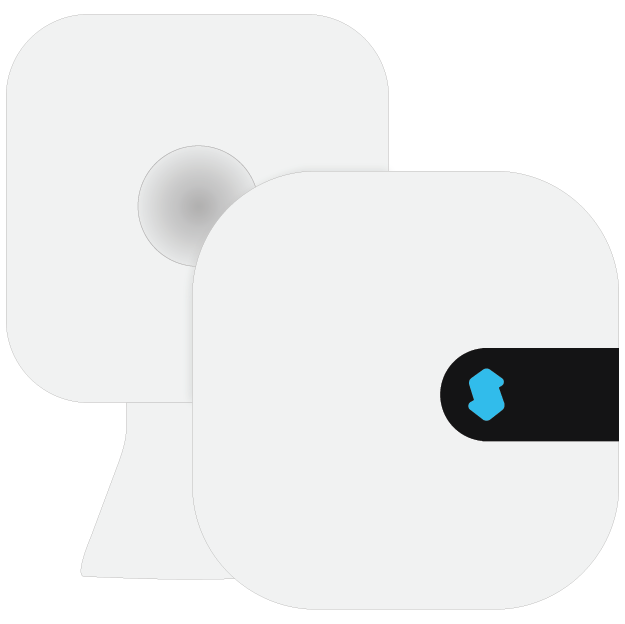





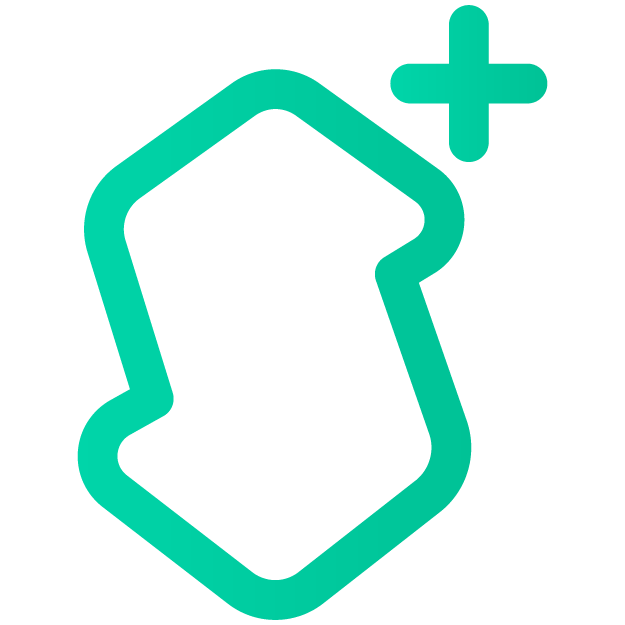



















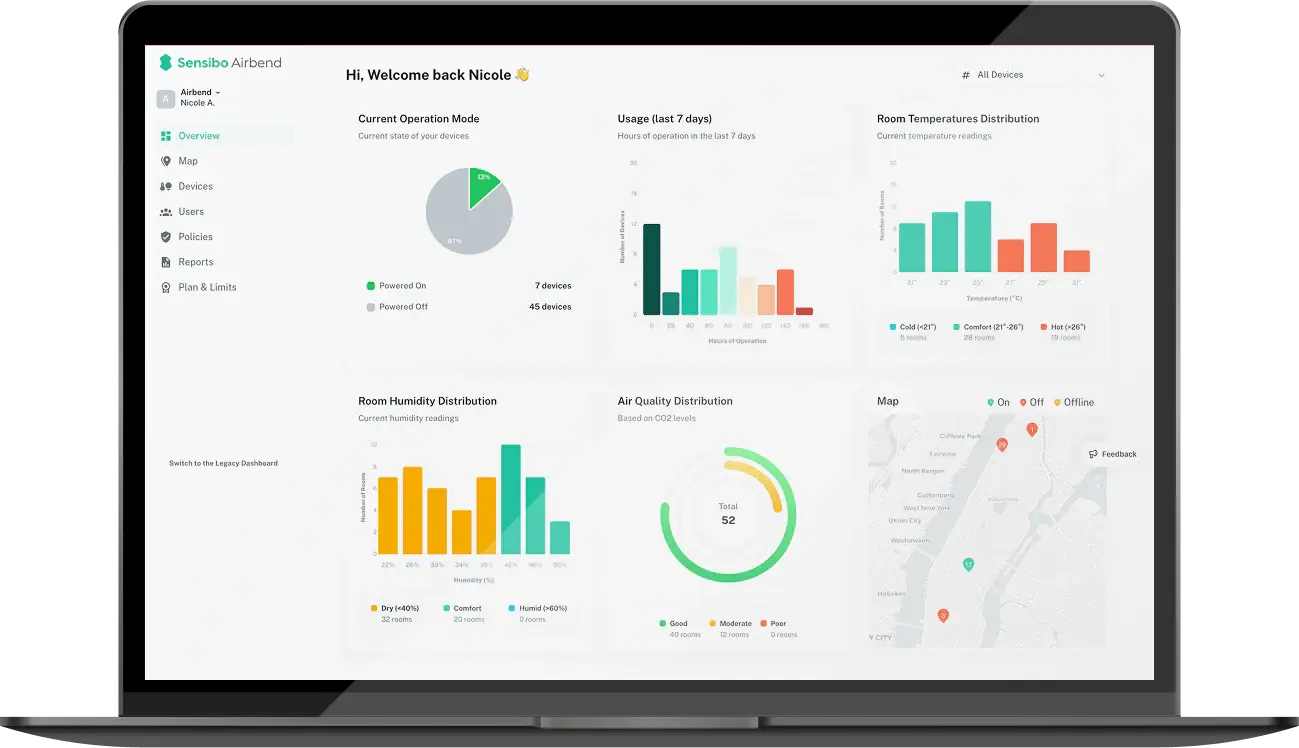





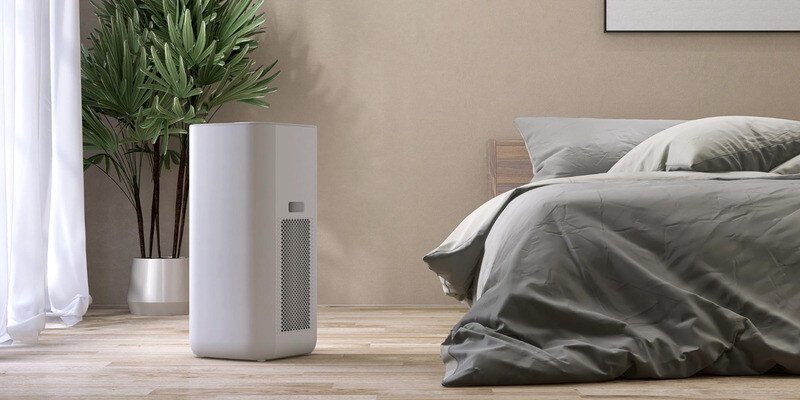

.jpg?height=200&name=photo_2024-03-18_16-41-15%20(1).jpg)
.jpg?height=200&name=photo_2024-03-28_19-57-48%20(1).jpg)
